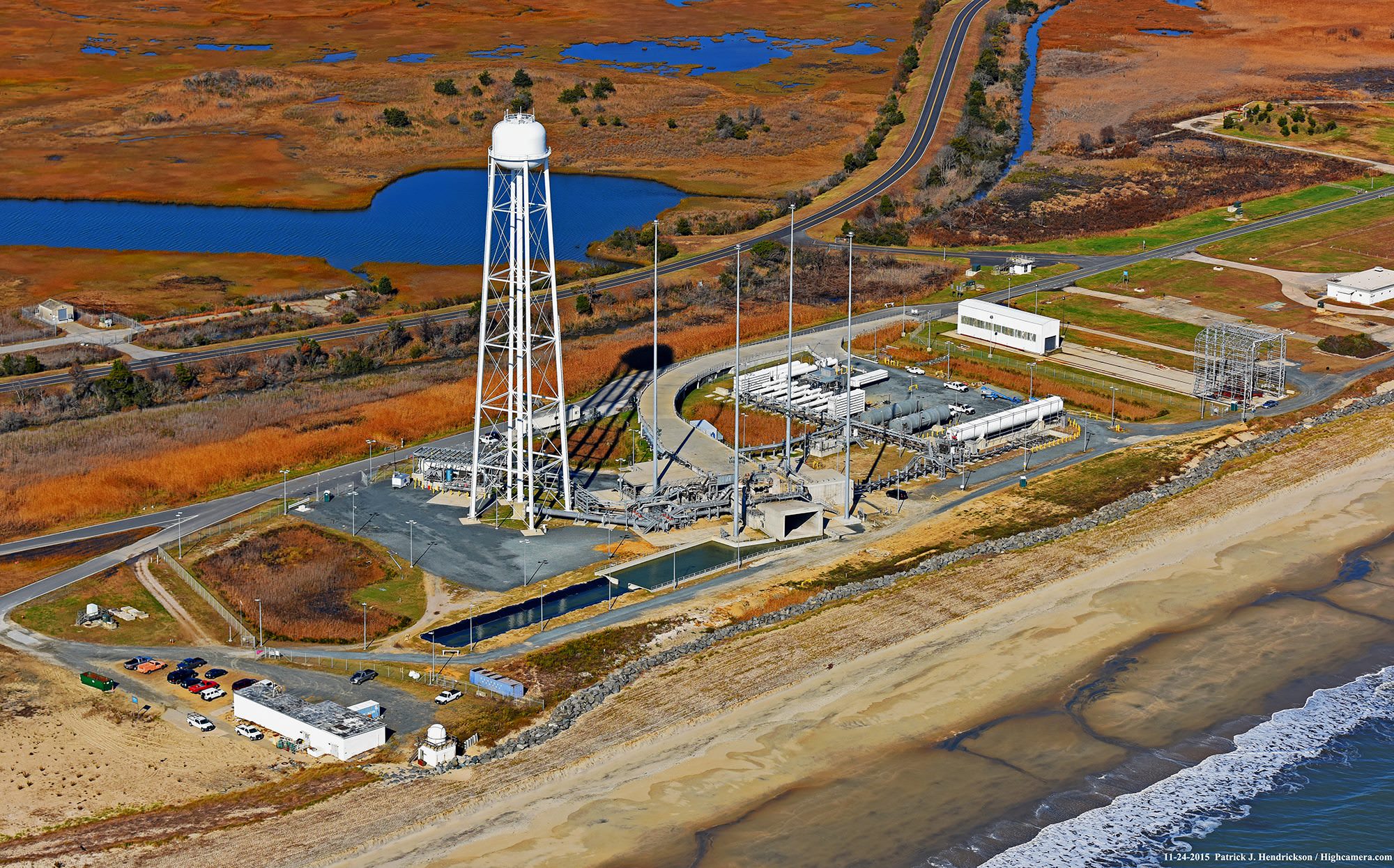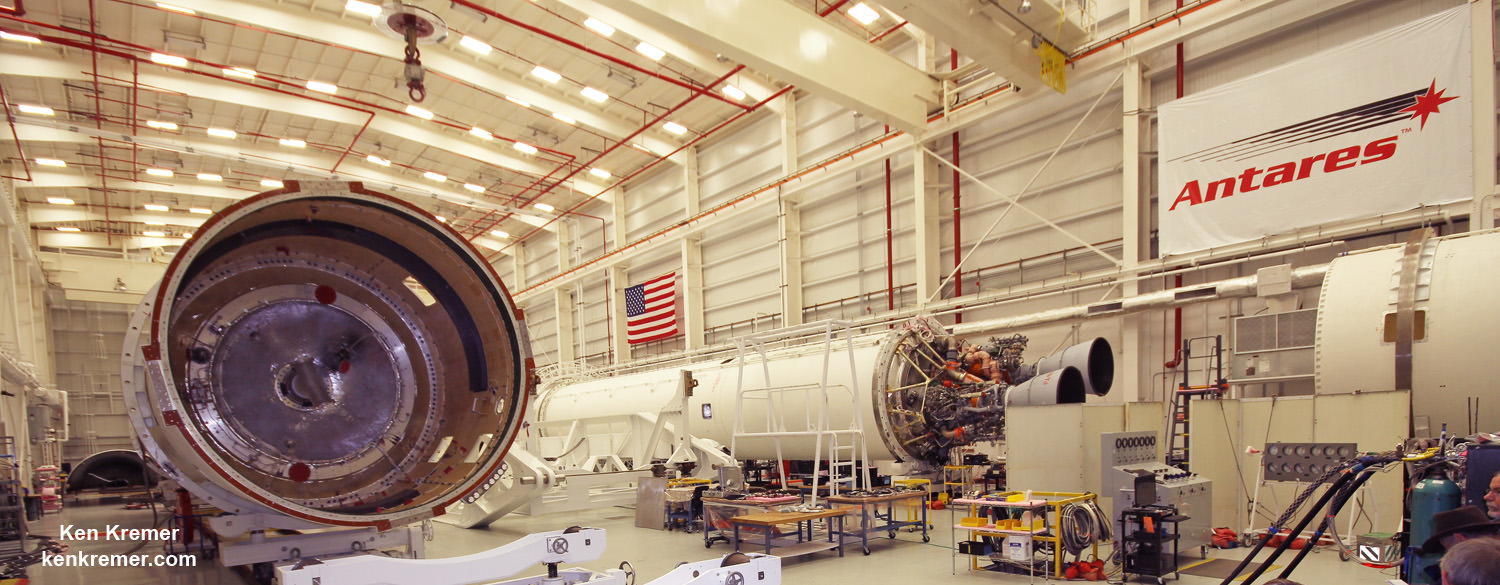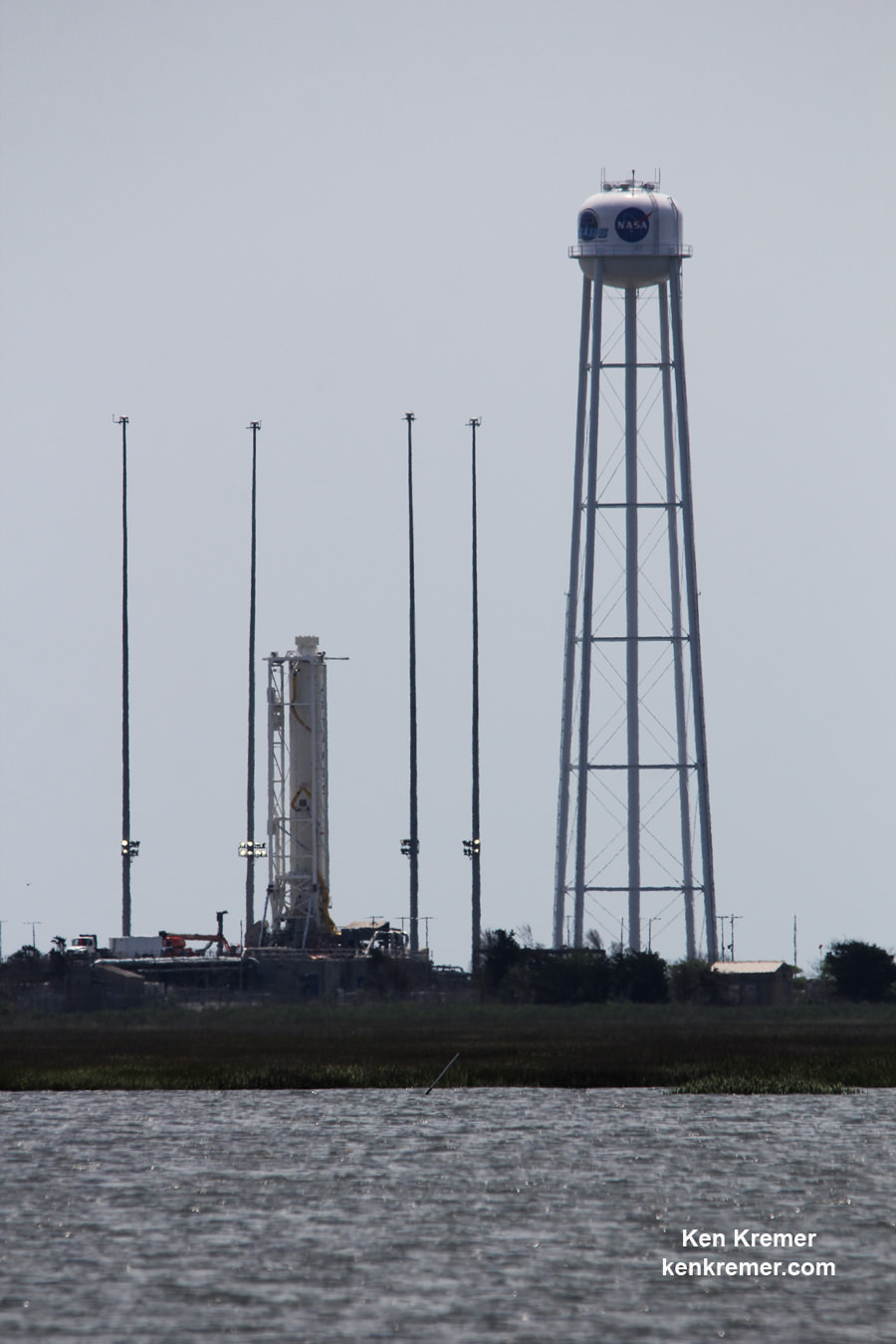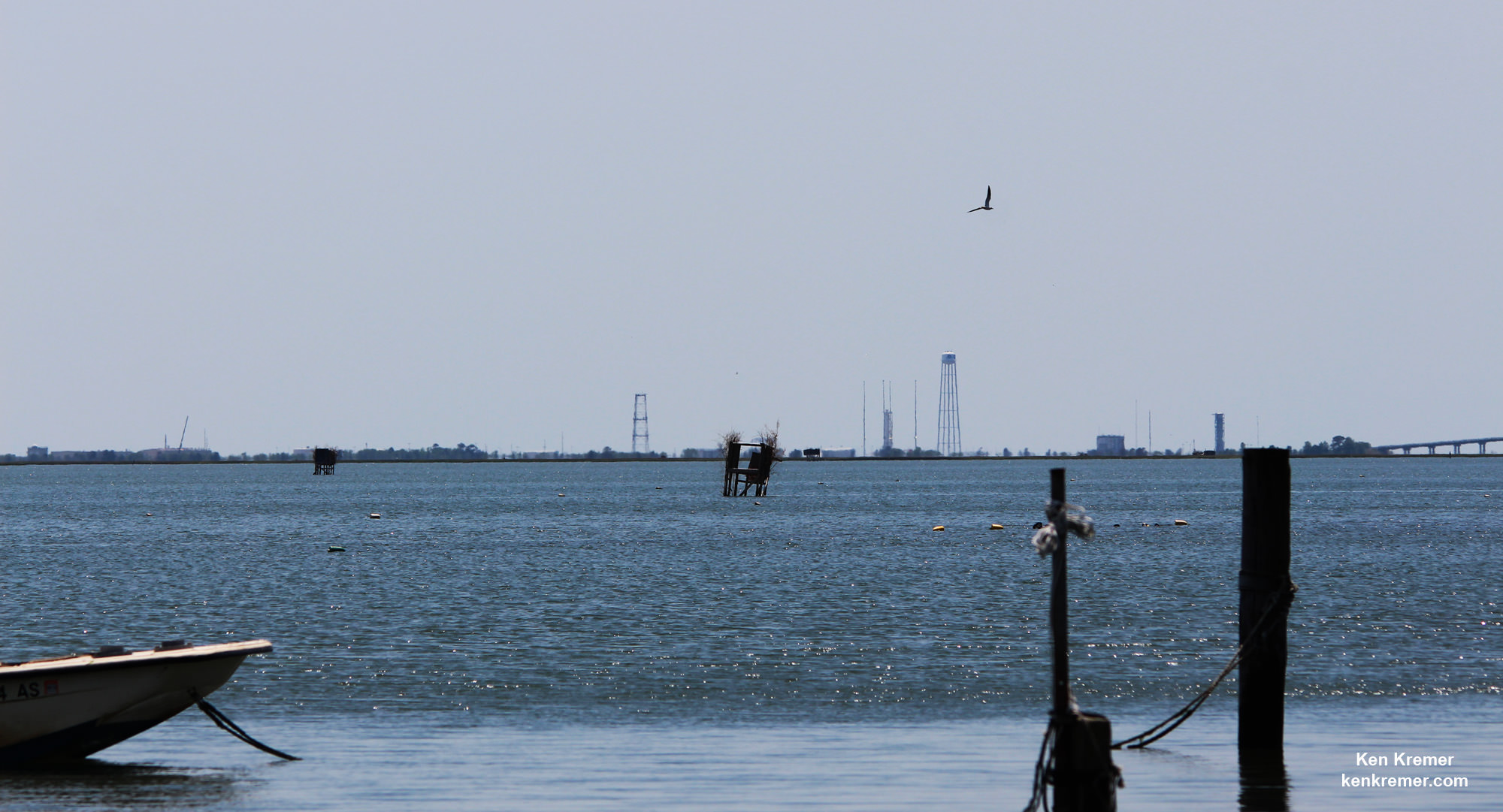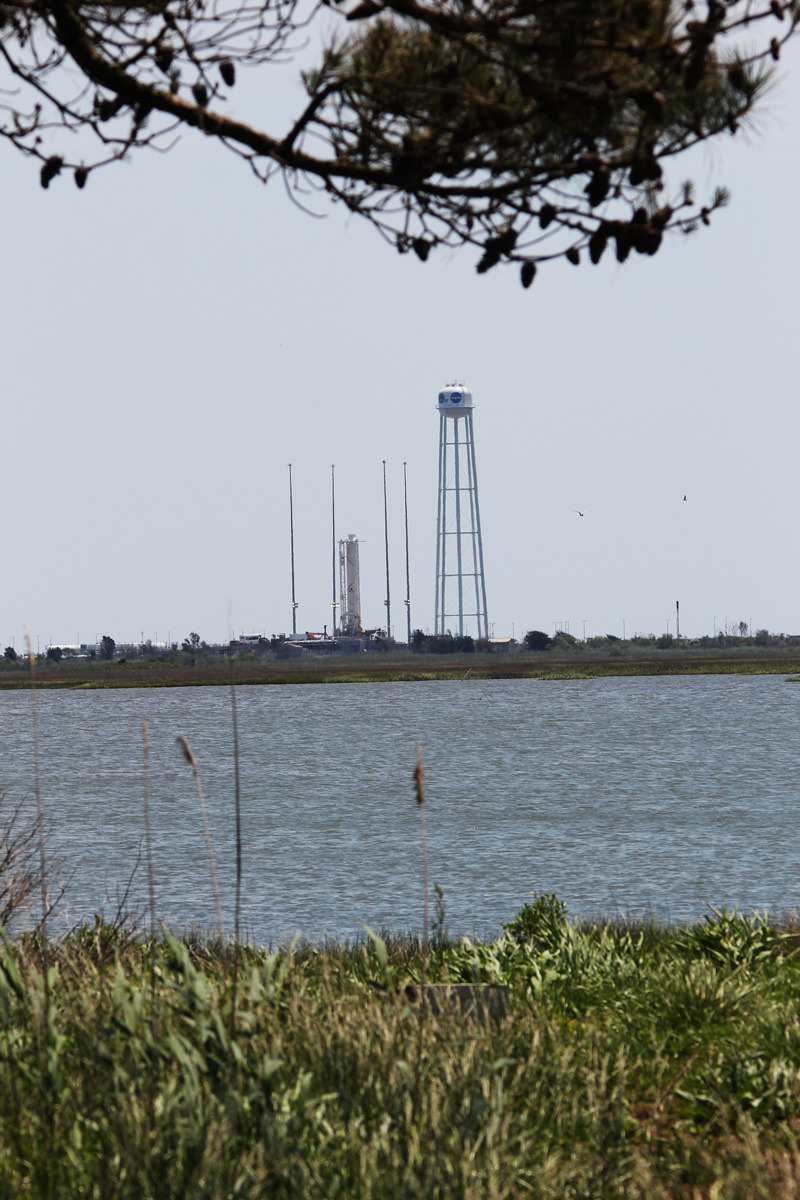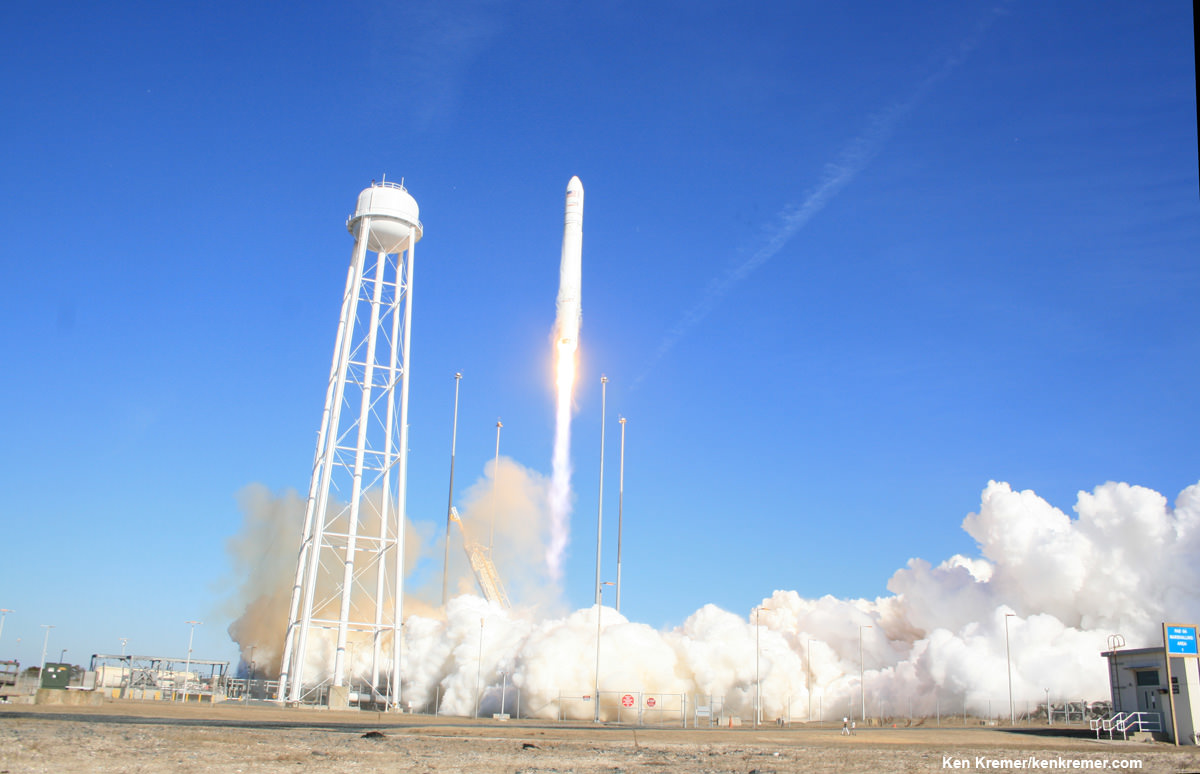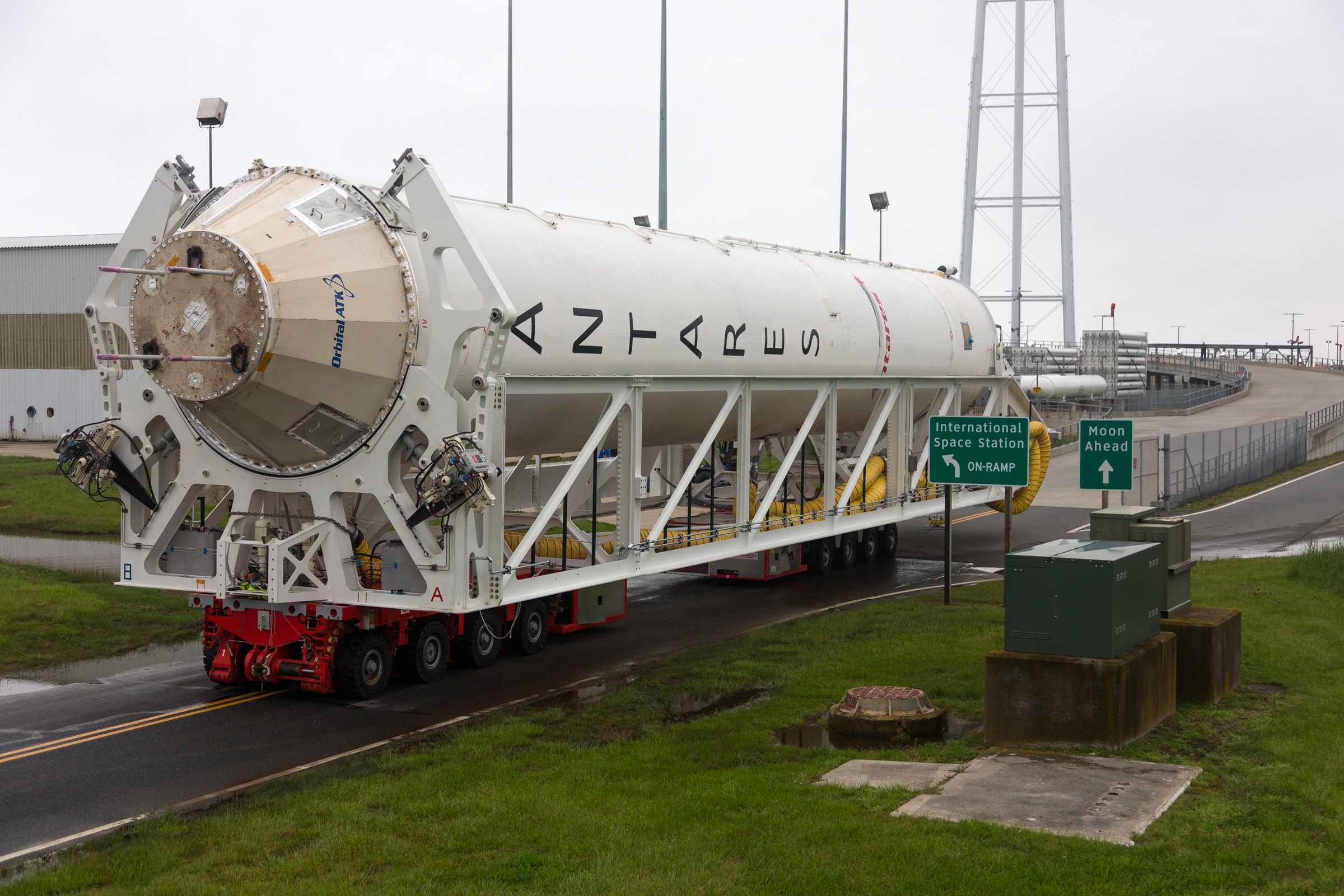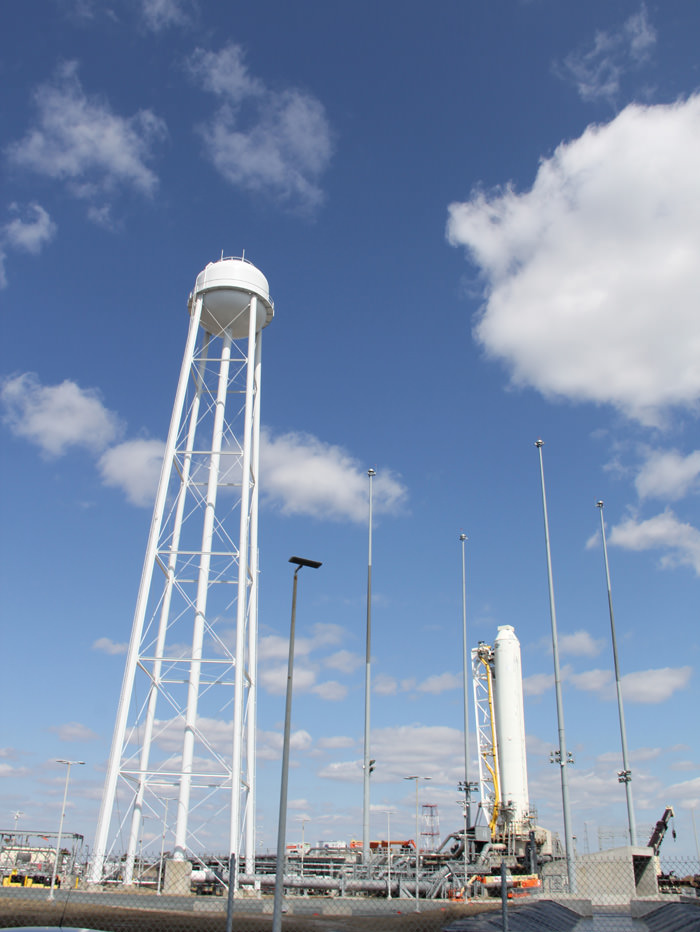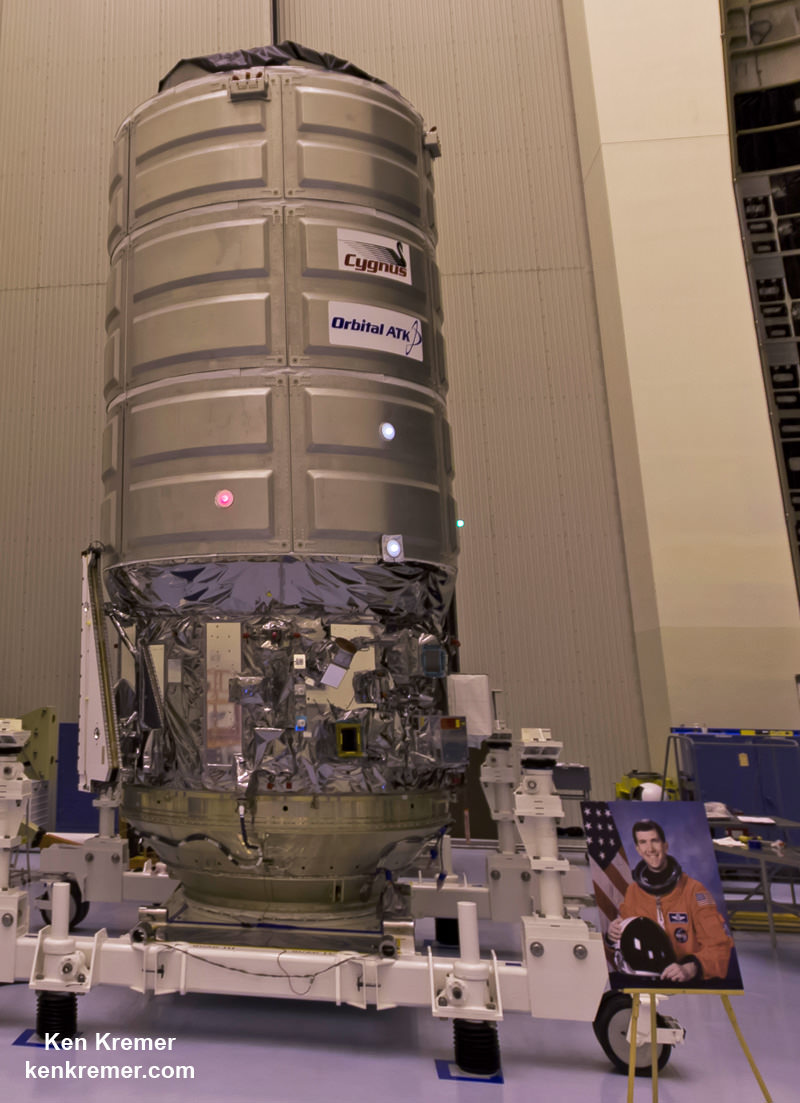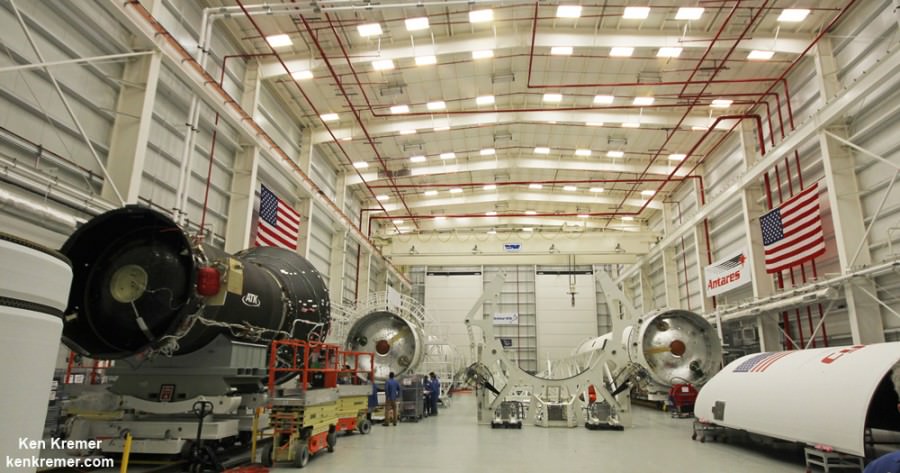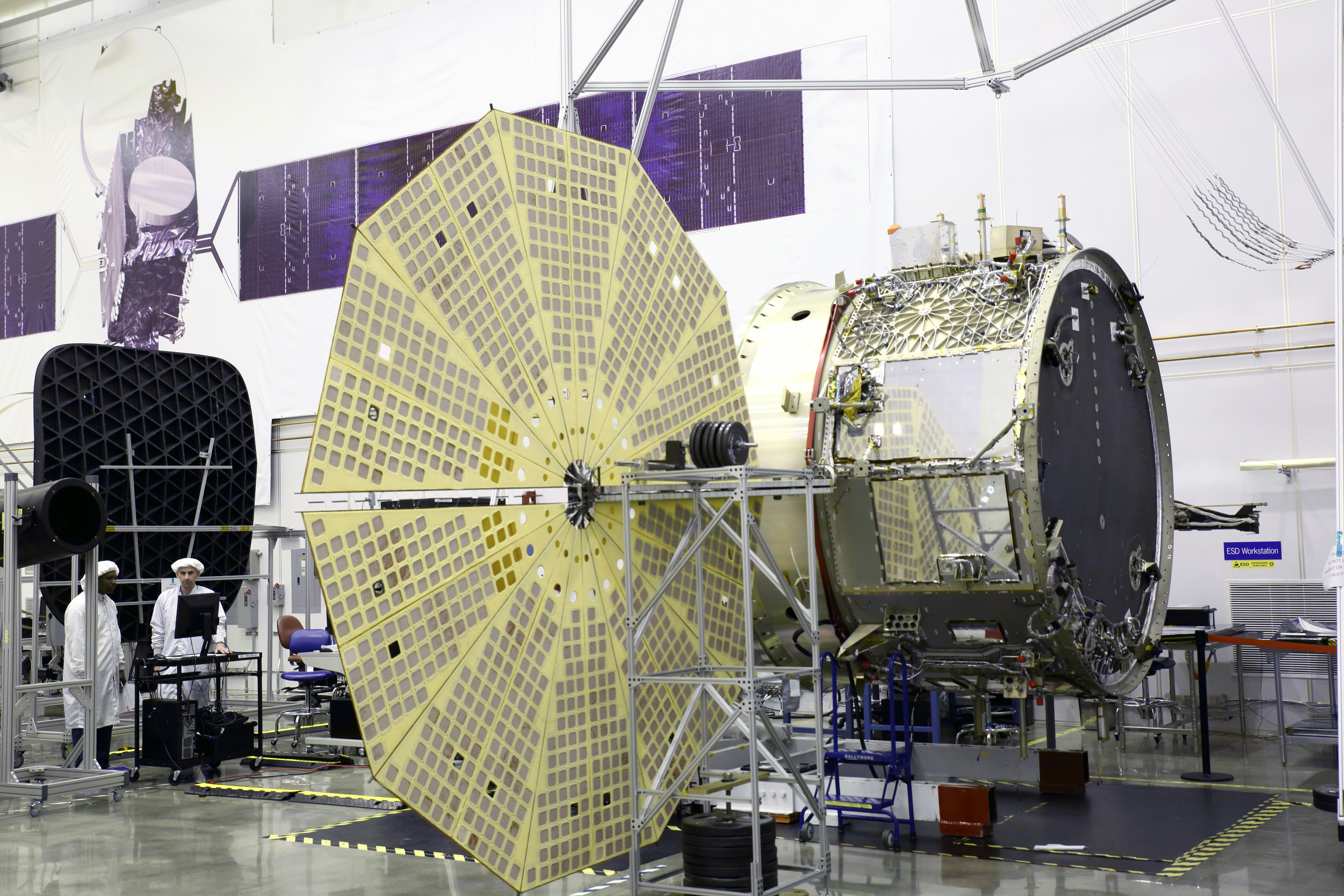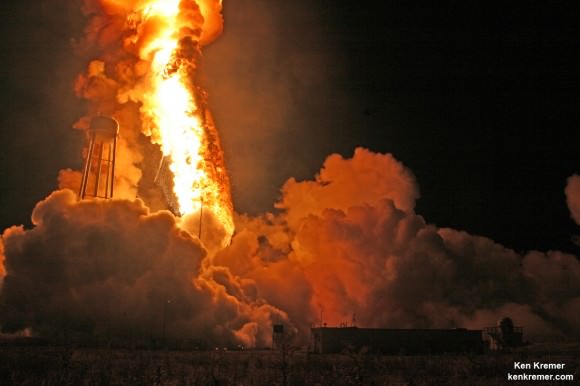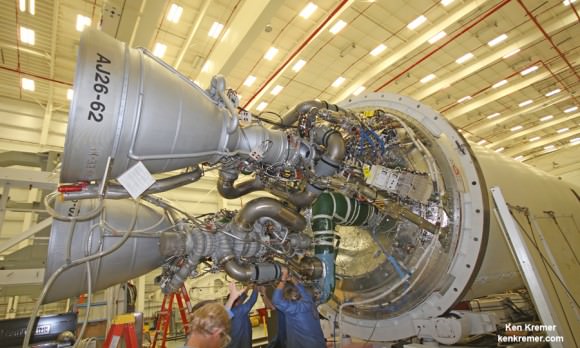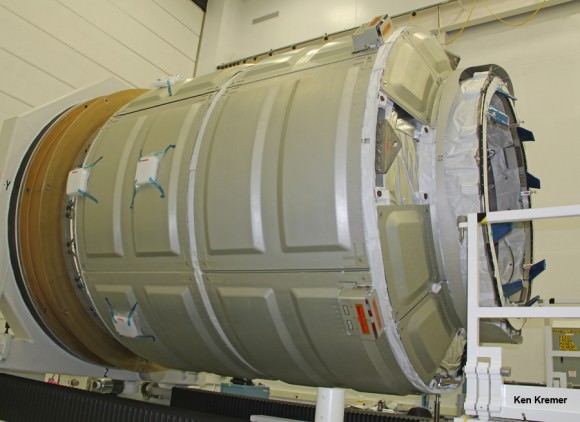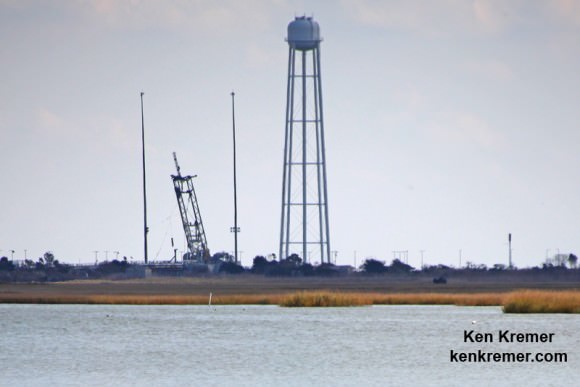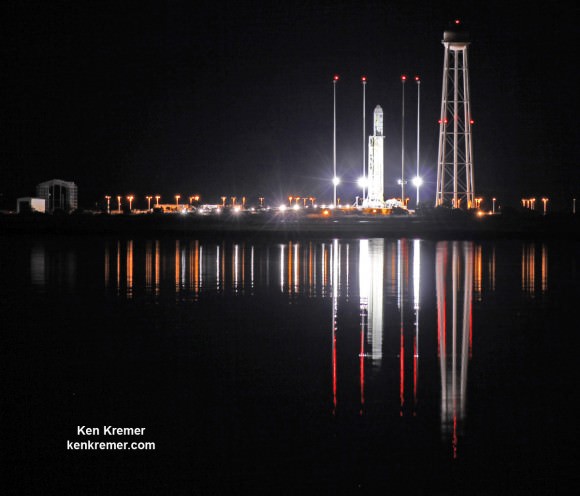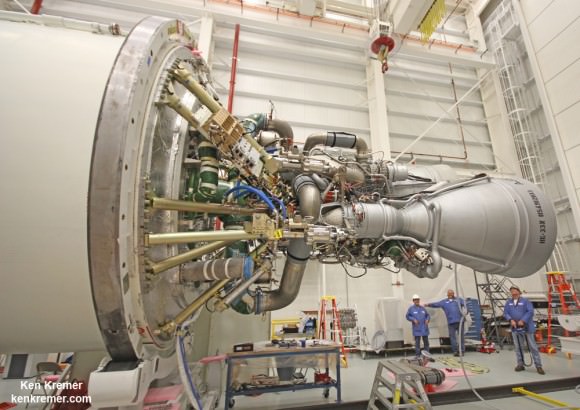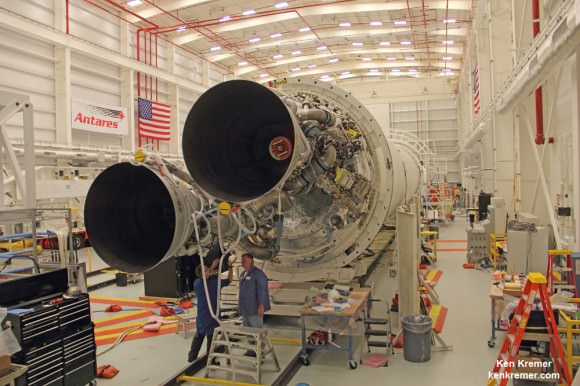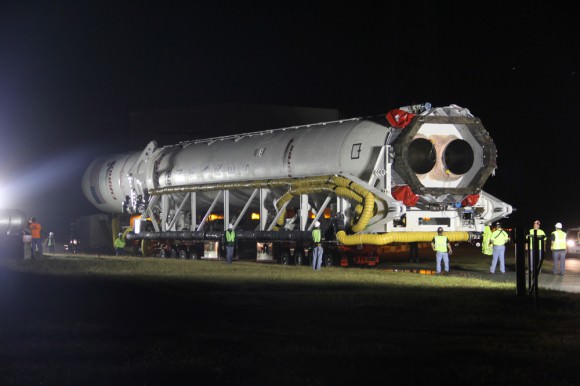
NASA is targeting mid-October for the ‘Return to Flight’ launch of the upgraded Orbital ATK Antares rocket on a cargo mission to resupply the International Space Station (ISS) for the first time in nearly two years.
The 14 story tall commercial Antares rocket will launch for the first time in the upgraded 230 configuration powered by new Russian-built first stage engines.
In light of the grounding of the SpaceX Falcon 9 and Dragon cargo flights following the catastrophic Sept.1 launch pad disaster,and the catastrophic Antares launch failure in Oct. 2014, this Orbital ATK mission becomes more critical than ever to keep the space station stocked and fully operational for the resident crews with a reliable American supply train.
NASA and Orbital ATK announced that the re-engined Antares will launch during a five-day launch window that opens no earlier than October 9-13, 2016 on the OA-5 Cygnus cargo mission from the Mid-Atlantic Regional Spaceport at NASA’s Wallops Flight Facility on Virginia’s picturesque Eastern shore.
“A more specific date will be identified upon completion of final operational milestones and technical reviews,” according to statements from NASA and Orbital ATK.
If Antares launches on Oct. 9, liftoff is set 10:47 p.m. EDT and becomes progressively earlier on succeeding days. The launch time moves up to 9:13 p.m. EDT on Oct. 13.
If the launch takes place during this window, it will mark the first truly nighttime launch for Antares from Virgina.
“The arrival and berthing of Cygnus to the International Space Station will be determined by the exact launch date and in coordination with other space station activities,” says NASA.
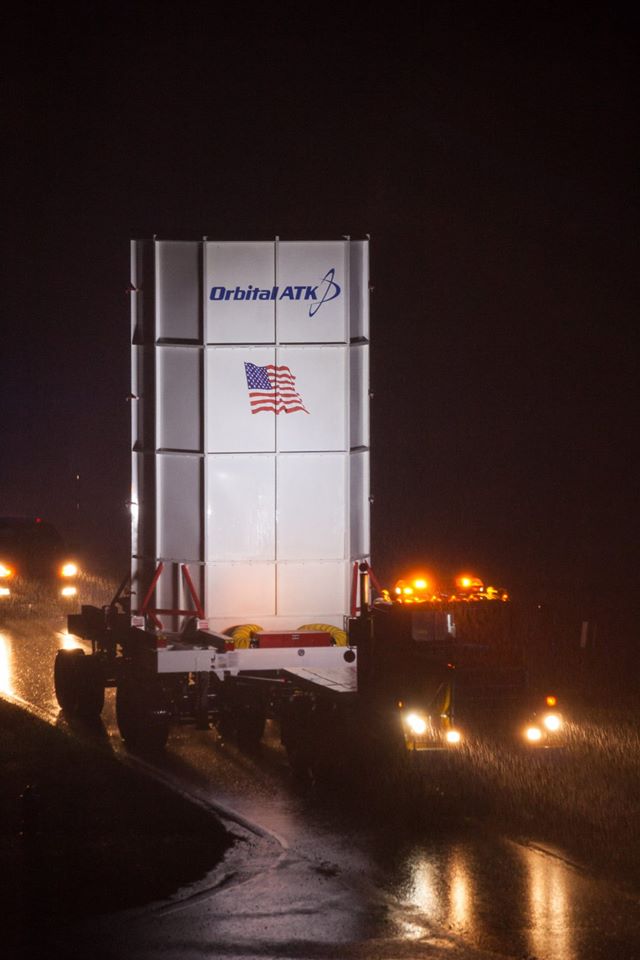
The Cygnus cargo spacecraft was moved this week from the NASA Wallops payload processing facility to the spacecraft fueling facility on Wallops Island.
The next step is to integrate Cygnus onto the Orbital ATK Antares 230 rocket inside the HIF (Horizontal Integration Facility) in anticipation of the launch slated for no earlier than Oct. 9 at 10:47 p.m. EDT.
The Antares 230 medium-class commercial launch vehicle rocket has been upgraded with new first stage Russian-built RD-181 engines fueled by LOX/kerosene – that had to be fully validated before launching NASA’s precious cargo to the International Space Station (ISS).
For the OA-5 mission, the Cygnus advanced maneuvering spacecraft will be loaded with approximately 2,400 kg (5,290 lbs.) of supplies and science experiments for the International Space Station (ISS).
Under the Commercial Resupply Services (CRS) contract with NASA, Orbital ATK will deliver approximately 28,700 kilograms of cargo to the space station. OA-5 is the sixth of these missions.
Orbital ATK’s Antares commercial rocket had to be overhauled with completely new first stage engines following the catastrophic launch failure nearly two years ago on October 28, 2018 just seconds after blastoff that doomed the Orb-3 resupply mission to the space station.
The goal of the Antares ‘Return to Flight’ mission is to launch Orbital ATK’s Cygnus cargo freighter on the OA-5 resupply mission for NASA to the ISS and restore the Antares rocket to flight status.
To that end the aerospace firm completed a successful 30 second long test firing of the re-engined first stage on May 31 at Virginia Space’s Mid-Atlantic Regional Spaceport (MARS) Launch Pad 0A – as I reported here earlier.
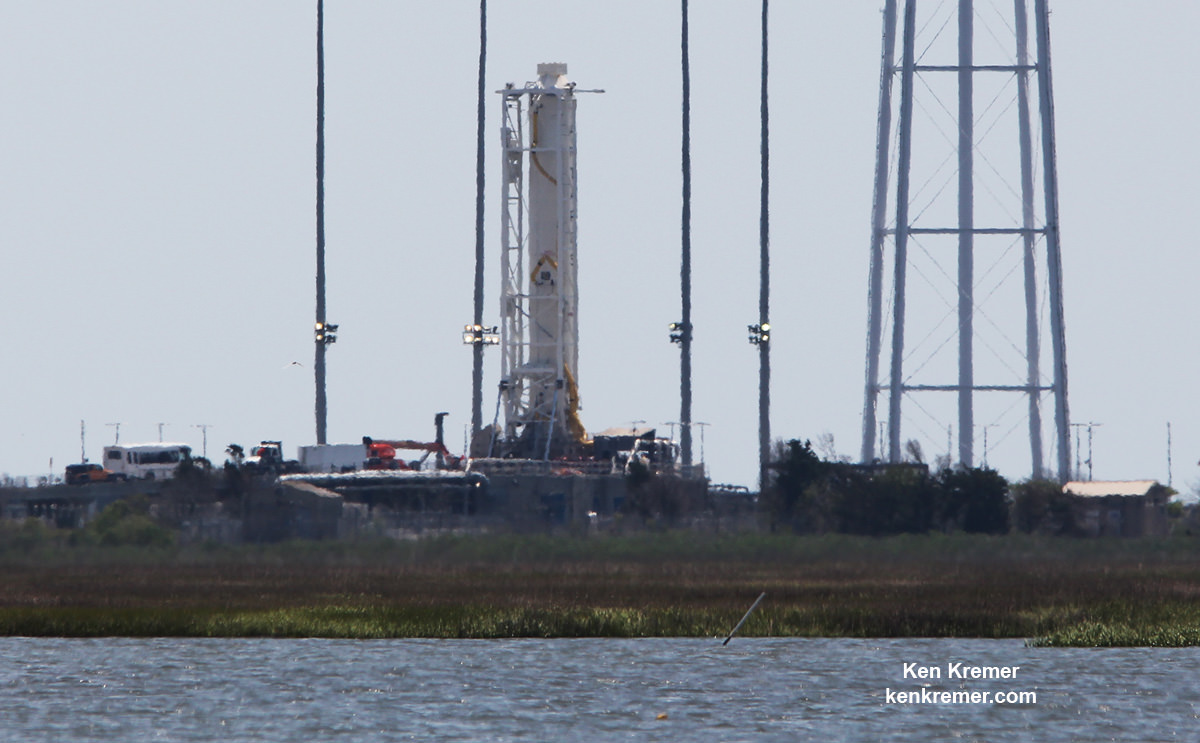
Teams from Orbital ATK and NASA have been scrutinizing the data in great detail ever since then to ensure the rocket is really ready before committing to the high stakes launch.
“Orbital ATK completed a stage test at the end of May and final data review has confirmed the test was successful, clearing the way for the Antares return to flight,” said the company.
“Simultaneously, the company has been conducting final integration and check out of the flight vehicle that will launch the OA-5 mission to ensure that all technical, quality and safety standards are met or exceeded.”
The projected launch date has been delayed several times since the May 31 hot fire test to deal with ‘vibration’ issues detected during the test.
Antares launches had immediately ground to a halt following the devastating launch failure 23 months ago which destroyed the rocket and its critical payload of space station science and supplies for NASA in a huge fireball just seconds after blastoff – as witnessed by this author.

As a direct consequence of the catastrophic launch disaster, Orbital ATK managers decided to outfit the Antares medium-class rocket with new first stage RD-181 engines built in Russia.
The launch mishap was traced to a failure in the AJ26 first stage engine turbopump and caused Antares launches to immediately grind to a halt.
Top Orbital ATK management soon decided to ditch the AJ26s, which were 40 year old refurbished engines, originally built during the Soviet era for their moon rocket and originally known as the NK-33.
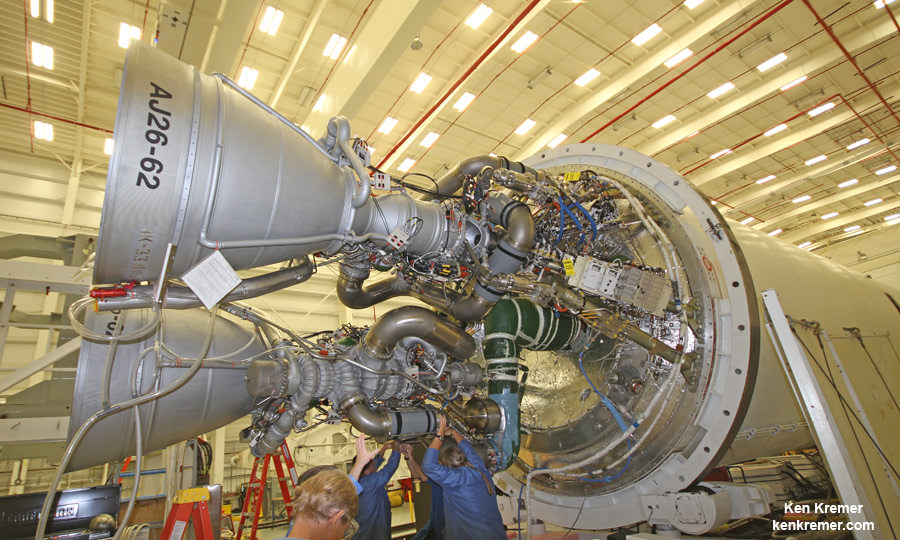
The RD-181 replaces the previously used AJ26 engines which failed moments after liftoff during the last launch on Oct. 28, 2014 resulting in a catastrophic loss of the rocket and Cygnus cargo freighter.
The RD-181 flight engines are built by Energomash in Russia and had to be successfully tested via the static hot fire test to ensure their readiness.

Watch for Ken’s continuing Antares/Cygnus mission and launch reporting. He will be reporting from on site at NASA’s Wallops Flight Facility, VA during the launch campaign.
Stay tuned here for Ken’s continuing Earth and Planetary science and human spaceflight news.
